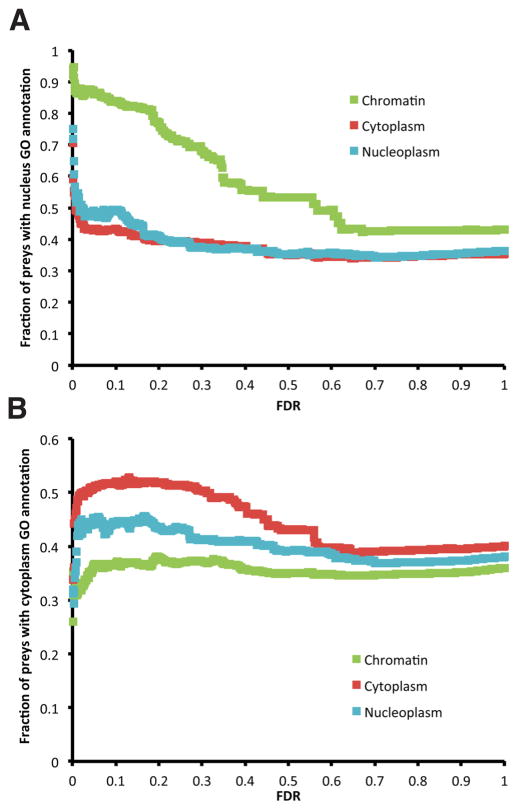Figure 4.
Proportion of the set of preys identified for the 15 baits in each cellular fraction (chromatin, cytoplasm, and nucleus) that are annotated with a GO cellular component term (A) “Nucleus” and (B) “Cytoplasm”. Because “Chromatin” is a poorly populated cellular localization annotation in GO, “Nucleus” was used as a surrogate. The unexpectedly large proportion of preys from the cytoplasmic fractions with a “Nucleus” GO cellular component is caused by the important number of POLR2A interactions that take place in both the nucleus and the cytoplasm. Similarly, the sudden decrease of the proportion for all compartments at low FDRs for the GO term “Cytoplasm” can be explained again by the large number of POLR2A interactions that take place in both the nucleus and the cytoplasm, but for which the preys are not annotated to be localized in the cytoplasm in GO.

